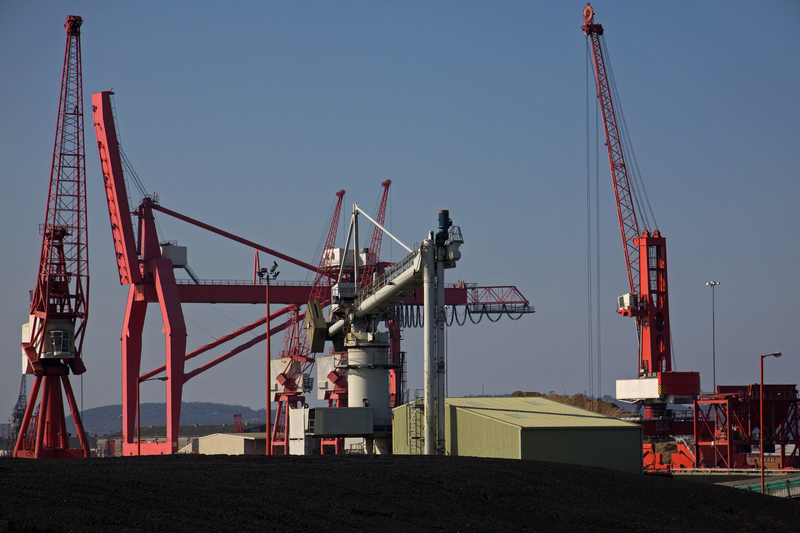Mastering Kinetic Lifting for a Healthier Back and Stronger Core
Unlocking the secrets of kinetic lifting can be the game-changer your fitness journey needs. If you're seeking a healthier back and a stronger core, then understanding the principles and practice of kinetic lifting is essential. Whether you're a fitness enthusiast, athlete, or someone looking to avoid chronic pain and injury, this comprehensive guide will walk you through everything you need to know about mastering kinetic lifting for a robust core and back health.
What Is Kinetic Lifting?
Kinetic lifting refers to the technique of leveraging the body's natural movement patterns and energy transfers to safely and effectively lift objects. Unlike traditional weightlifting which may focus on isolated muscle groups, kinetic lifting emphasizes the synergistic action of the entire body--especially the core and back. This holistic approach helps reduce injury risk and increases overall power and stability.
Understanding the Kinetics
Kinetics is all about motion and the forces involved in movement. When applied to lifting, kinetic principles focus on:
- Generating power from the major muscle groups
- Distributing force efficiently to reduce unnecessary strain
- Engaging the core muscles to provide stability and support
- Utilizing proper form to maintain spinal alignment and safety

Benefits of Mastering Kinetic Lifting
Incorporating kinetic lifting exercises into your workout routine offers a multitude of benefits that extend beyond just muscle growth. Here's why you should master kinetic lifting for a healthier back and stronger core:
- Improved Posture: Building a resilient core and back reduces the tendency to slouch and helps you maintain a neutral spine alignment throughout your daily life.
- Enhanced Performance: Athletes and fitness enthusiasts experience a significant boost in strength, agility, and functional movement.
- Injury Prevention: Proper lifting techniques protect your spinal discs and soft tissues, drastically lowering the risk of strains and herniations.
- Core Stability: Kinetic lifting routines target deep core muscles, improving balance and movement efficiency for all physical activities.
- Pain Reduction: Many back pains originate from poor mechanics and weak core muscles. Kinetic lifting is effective in alleviating chronic discomfort.
Key Principles of Kinetic Lifting
For mastering kinetic lifting and truly strengthening your core and back, it's vital to adhere to these foundational principles:
1. Engage the Core in Every Lift
A strong core acts as a natural weight belt. Before executing any lift, ensure your abdominal and lower back muscles are activated. This engagement stabilizes the torso and prevents excessive spinal curvature during the movement.
2. Maintain a Neutral Spine
Never round or hyperextend your back while lifting. A neutral spine preserves the natural curves of your vertebral column, absorbing shock and protecting your spinal discs.
3. Use the Hip Hinge
Proper kinetic lifting is rooted in the hip hinge--pushing your hips back while keeping the chest up. This technique passes the load through your glutes, hamstrings, and core, dramatically reducing back strain.
4. Distribute the Load Evenly
Focus on generating force from the ground up. Drive through your heels, tighten your glutes, and move as a single cohesive unit. This kinetic chain reaction enables powerful, safe lifts.
5. Breathe Correctly
Coordinated breathing is pivotal for stability. Inhale before you lift, brace your core (creating intra-abdominal pressure), and exhale gently during the hardest part of the lift. Proper breathing ensures core engagement and promotes a healthier back.
Essential Kinetic Lifting Exercises
To master kinetic lifting and build a bulletproof back and powerful core, incorporate these cornerstone exercises into your training regimen:
1. Deadlifts
Deadlifts are the gold standard for kinetic lifting, targeting glutes, hamstrings, erector spinae, and the deep core. Focus on:
- Hip hinging without rounding the back
- Active core engagement throughout the lift
- Driving through the heels and keeping the bar close to your shins
2. Kettlebell Swings
Kettlebell swings teach dynamic energy transfer, explosive hip extension, and resilient core coordination. The movement enhances functional strength and cardiovascular fitness simultaneously.
3. Squats
Whether with a barbell or bodyweight, deep squats recruit the core and entire lower body. Maintaining a tall chest and braced core maximizes kinetic benefits for your back.
4. Farmer's Walks
Farmer's walks are deceptively simple but brutally effective. Carrying heavy weights while walking challenges grip, posture, and total core stability.
5. Plank Variations
Static and dynamic planks (side, front, extended, weighted) develop deep core strength and endurance, providing essential support for kinetic lifts.
Step-by-Step Guide to Perfect Kinetic Lifting Technique
For optimal results and injury prevention, follow this step-by-step guide when performing any kinetic lift:
- Set Your Feet: Place feet shoulder-width apart, toes slightly pointed out for stability and natural hip engagement.
- Brace the Core: Breathe in, draw your belly button inward, and tighten your lower abs and obliques.
- Hinge at the Hips: Push your hips back, bend the knees slightly, and maintain a neutral spine and chest up position.
- Grip the Weight: Whether it's a barbell, kettlebell, or another object, grip firmly and prepare to lift.
- Engage the Whole Body: Pull the weight close to your body, drive through your heels, and rise using your legs and hips.
- Lockout: At the top of the movement, stand tall and squeeze your glutes, keeping the core tight and shoulders back.
- Lower Safely: Reverse the movement by hinging the hips back and bending the knees before lowering the weight to the ground.
Common Mistakes to Avoid in Kinetic Lifting
Even seasoned lifters can make mistakes that compromise back and core health. Watch out for these pitfalls:
- Rounding the Lower Back: This increases disc pressure and injury risk. Always maintain a neutral spine.
- Excessive Knee Bending: Prevent your knees from traveling too far forward--focus on hip movement.
- Neglecting Core Engagement: Failing to brace the core places excess strain on the spine.
- Lifting Too Quickly: Use controlled, explosive movement rather than jerking or rushing the lift.
- Holding Your Breath: Remember to coordinate your breath with movement for maximum support and power.
Progressive Overload and Kinetic Lifting
Building a strong core and healthy back with kinetic lifting also requires progressive overload. Gradually increase the weight, repetitions, or intensity of your lifts to stimulate muscle growth, neuromuscular adaptation, and power gains while maintaining perfect form.
- Add small increments of weight weekly
- Incorporate more advanced kinetic lift variations (pause reps, deficit lifts)
- Track your lifts to ensure steady progress
Incorporating Kinetic Lifting into Everyday Life
Mastering kinetic lifting for a healthier back isn't only for the gym. Correct lifting mechanics should carry over into daily tasks to truly protect your spine and core:
- Picking up children or groceries: Use a hip hinge and brace your core.
- Moving boxes: Keep the weight close, lift with your legs and hips, not just your arms.
- Getting up from a chair: Engage your core and drive through your heels instead of pushing off with your hands.
Integrating kinetic movement patterns into your daily routine reinforces healthy habits and spinal safety, ensuring your progress inside the gym translates to real-world resilience.
Warm-Up and Mobility for Kinetic Lifting Success
A high-quality warm-up primes your body for efficient, safe kinetic lifts. Dedicate 10-15 minutes before training to dynamic stretches and mobility drills:
- Cat-Cow and Child's Pose for spinal mobility
- World's Greatest Stretch targeting the hips and thoracic spine
- Glute bridges and core activation exercises
- Bodyweight hip hinges and air squats to groove movement patterns
This preparation increases blood flow, lubricates joints, and enhances muscle elasticity, laying the foundation for flawless kinetic lifting technique.
Recovery and Injury Prevention
Prioritize recovery to maximize the benefits of kinetic lifting:
- Rest days: Allow muscles and soft tissues to regenerate.
- Mobility sessions: Incorporate regular foam rolling, stretching, and yoga to prevent stiffness.
- Hydration and nutrition: Support muscle recovery with balanced meals and plenty of water.
- Listen to your body: Address minor aches before they become injuries.

Frequently Asked Questions about Kinetic Lifting
Can beginners practice kinetic lifting?
Absolutely! Kinetic lifting is safe and incredibly beneficial for people of all experience levels. Start with bodyweight or light objects, master the movement patterns, and gradually progress.
How often should I train kinetic lifts?
For optimal results, incorporate kinetic lifting (such as deadlifts, swings, or squats) 2-3 times per week, alongside functional core exercises.
Is kinetic lifting suitable for older adults?
Yes, with proper technique and gradual progression, kinetic lifting enhances balance, mobility, and bone density in older individuals. Working with a qualified coach is highly recommended.
Conclusion: Transforming Your Back and Core Health
Mastering kinetic lifting for a healthier back and stronger core is a worthwhile investment in your long-term health and performance. By following the principles outlined above and practicing the key exercises, you'll build a resilient, pain-free back and an exceptionally strong core. Remember: quality of movement trumps quantity. Focus on perfecting your technique, prioritize recovery, and continually challenge yourself to progress.
Your journey to robust back and core health begins now. Embrace the principles of kinetic lifting, and enjoy a stronger, more capable body--both in and out of the gym.



